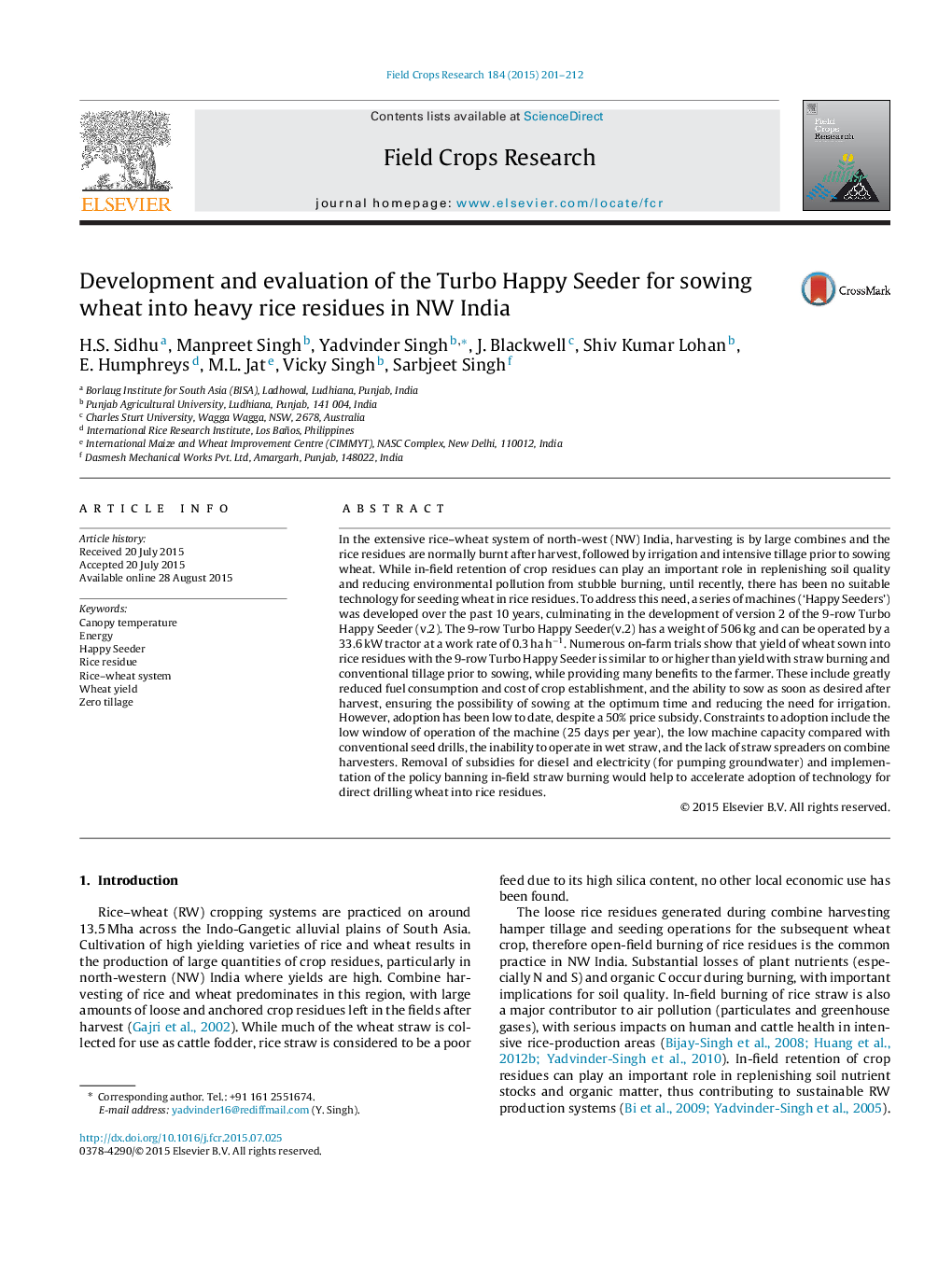| کد مقاله | کد نشریه | سال انتشار | مقاله انگلیسی | نسخه تمام متن |
|---|---|---|---|---|
| 6374664 | 1624679 | 2015 | 12 صفحه PDF | دانلود رایگان |
- In-field retention of crop residues can play an important role in replenishing soil health and reducing environmental pollution from stubble burning.
- Series of machines were developed in the last 10 years, culminating in the development of present version 2 of the 9-row Turbo Happy Seeder (v.2).
- Grain yield of wheat directly sown into rice residues with Turbo Happy Seeder (v.2) is similar to or higher than that with straw burning and conventional tillage, while providing many benefits to the farmers.
In the extensive rice-wheat system of north-west (NW) India, harvesting is by large combines and the rice residues are normally burnt after harvest, followed by irrigation and intensive tillage prior to sowing wheat. While in-field retention of crop residues can play an important role in replenishing soil quality and reducing environmental pollution from stubble burning, until recently, there has been no suitable technology for seeding wheat in rice residues. To address this need, a series of machines ('Happy Seeders') was developed over the past 10 years, culminating in the development of version 2 of the 9-row Turbo Happy Seeder (v.2). The 9-row Turbo Happy Seeder(v.2) has a weight of 506 kg and can be operated by a 33.6 kW tractor at a work rate of 0.3 ha hâ1. Numerous on-farm trials show that yield of wheat sown into rice residues with the 9-row Turbo Happy Seeder is similar to or higher than yield with straw burning and conventional tillage prior to sowing, while providing many benefits to the farmer. These include greatly reduced fuel consumption and cost of crop establishment, and the ability to sow as soon as desired after harvest, ensuring the possibility of sowing at the optimum time and reducing the need for irrigation. However, adoption has been low to date, despite a 50% price subsidy. Constraints to adoption include the low window of operation of the machine (25 days per year), the low machine capacity compared with conventional seed drills, the inability to operate in wet straw, and the lack of straw spreaders on combine harvesters. Removal of subsidies for diesel and electricity (for pumping groundwater) and implementation of the policy banning in-field straw burning would help to accelerate adoption of technology for direct drilling wheat into rice residues.
Journal: Field Crops Research - Volume 184, December 2015, Pages 201-212
